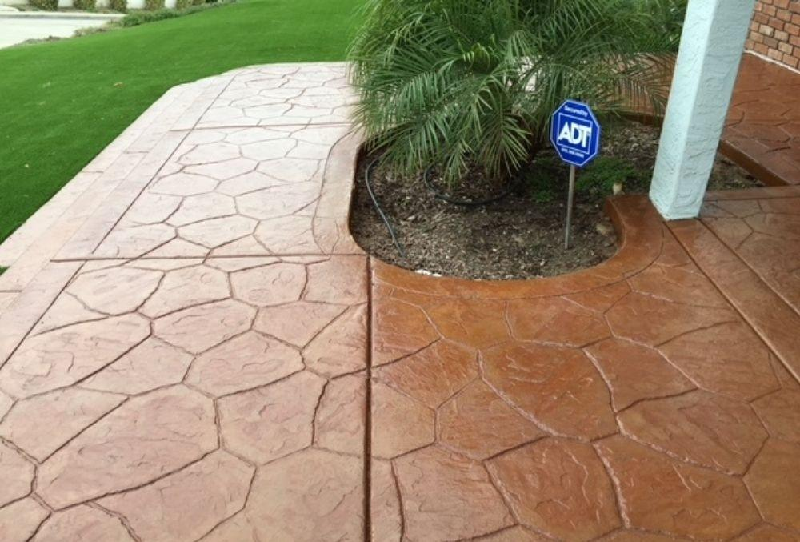Concrete floors can look so much more than ordinary grey, cold cement. This is possible with a decorative concrete overlay. What are these exactly, and would there be various styles and patterns to match your properties’ theme? Find out all these in today’s post.
Decorative overlays unraveled
Before you learn about the various decorative overlays, let’s have a few reviews of the basics first with the definition of overlays.
Overlays are flooring applications specially made for concrete floors, thus the name concrete overlay. Through resurfacing, an old concrete floor can look brand new without even having to dg up the old slabs and replace them. That is why decorative concrete coatings are cost-efficient, and it saves owners from spending too many fees for installing new cement and preparing a new surface for installation.
Types of Concrete Overlays to Choose from
There are four typical types of concrete overlays. To know what type to choose, check out the following discussions on each option and figure out what kind and patterns would fit the motif in your properties.
1- Colored overlay
2- Textured overlay
3- Polished concrete
4- Microtoppings
Let’s get to know each of them below:
Colored Concrete
Colored concrete overlays are practical to create. This method is perfect if you opt to use minimal decor and showcase a more natural look on the concrete floors.
A popular approach to colored overlays is with stained concrete. Staining pigments are used with either water r acid as carriers. The key with staining is letting the stains seep through just the surface and targeting the materials’ core, making the colors soaked inside the pores of the cement and not only on the surface. That way, the pigments would not fade quickly, and by finishing the stained concrete overlay with sealers, the colors are locked in.
Textured Overlays
Nowadays, there are many ways to achieve textured patterns on concrete surfaces. You could also see methods applied on multiple surfaces that work for both vertical and horizontal spaces: the floors and ceilings.
The stamped overlay is a popular method that can stand on its own in terms of the moths and the outcomes. However, it can also be included with other textured overlays, such as the spray knockdown finish or the scorched concrete, for they have closely related methods.
Like stamped concrete other textured patterns are installed using manual tools and devices to decorate the surface on freshly poured concrete.
The textured patterns make the floor surface look like other raw stone and cement floor materials. Textured prints enhance the slip resistance of the character, especially on outdoor floors.
Stamped, spray texture, exposed aggregates, and the like would often be used among driveways, patios, and entryways. These are also a suitable choice when you want to resurface the pool deck.
Polished concrete
Polished concrete is often the choice for patio floors, and it involves the process of polishing where a diamond grinder runs through the surface of the concrete. The result? A glossy, clear, and glimmering floor makes a patio stand out and look elegant even if the owner uses plain, grey concrete.
Polished overlays allow you to have a stunning look on the floors. A clean, smooth finish is simply attractive and pleasing to the teys. However, the limitation of this method is that this may not be suitable for driveways, especially for sloping surfaces.
Microtoppings
Micro toppings are innovative overlays that adapt the micro topping appreciation for concrete walls and facades.
This method is cost=efficent and would not involve any additional resurfacing compounds. The outcome can come as it is without having to use any sealers.
What makes micro topping overlay so distinct is the way installers apply them. They only need familiar tools like the flat towel and the fresh concrete mix.
It involves two essential steps. First is the pouring of the first layer of the concrete slab, and next is the application of the micro toppings. The primary step, which also consists of the finishing layer, is pouring or applying several scops of concrete mix.
Using a trowel, the installer would make a forceful throw of the cement mix on the surface, creating a small portion of concrete coating. Before the cement mix cures, the installer spreads the mix in a distinct direction creating a patron of its own. With each stroke of sprain, the cement creates a unique and controlled ensign that follows the liking of the installer. As an owner, you can tell the contractor how you want the micro toppings to take shape so they can customize them according to your liking.
Combine the patterns you like
As a final option, you can have two or more systems or options go together. If you are more of a creative designer, then you can go beyond the typical chives. However, the good thing about learning the basics of decorative overlays is to familiarise yourself with different techniques. You might love using the pigment color you desired more on the natural aesthetic, and using the simple grey look of concrete might be the best choice for you.
Also, consider how each application is made, the time of how each is completed, and the area snooze of your concrete floor. Once you have factored in the essential details, you can g and start your decorative overlays journey.
Glaucous Aesthetic – Beautiful creation of nature.
